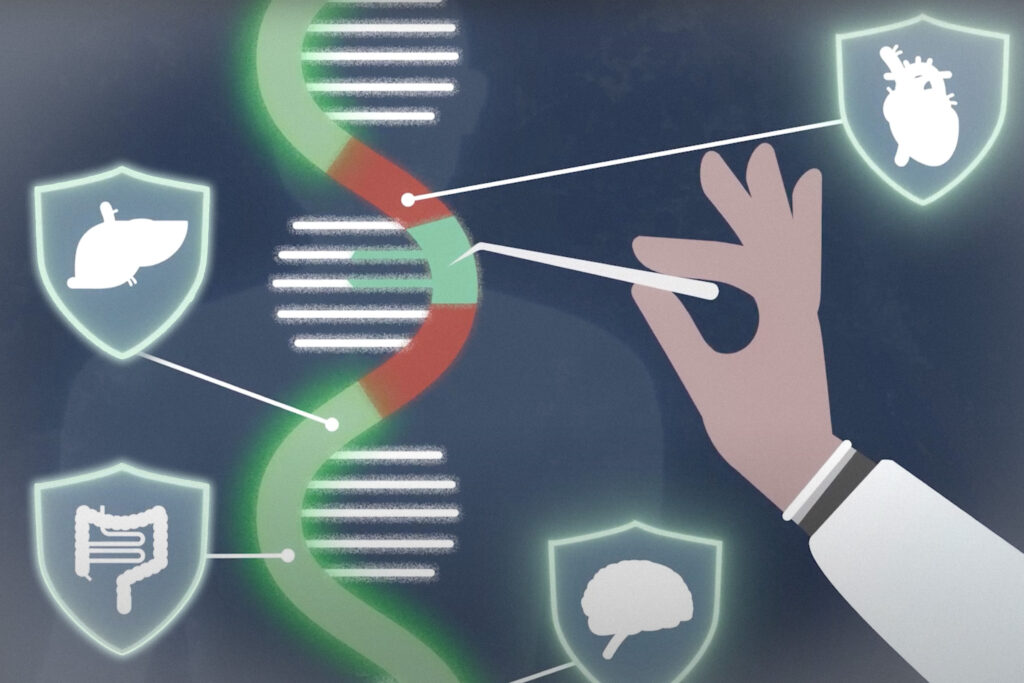
Using artificial intelligence, researchers at the Massachusetts Institute of Technology (MIT) have developed a groundbreaking method to design nanoparticles that enhance the delivery of RNA vaccines and therapies. By training a machine-learning model on thousands of existing delivery particles, the team has been able to predict new materials that could perform even better. This innovation could significantly accelerate the development of RNA-based treatments for diseases such as obesity and diabetes.
The study, published in Nature Nanotechnology, was led by Alvin Chan, now an assistant professor at Nanyang Technological University, and Ameya Kirtane, an assistant professor at the University of Minnesota. The senior author, Giovanni Traverso, an associate professor of mechanical engineering at MIT and a gastroenterologist at Brigham and Women’s Hospital, emphasized the potential of this approach. “What we did was apply machine-learning tools to help accelerate the identification of optimal ingredient mixtures in lipid nanoparticles to help target a different cell type or help incorporate different materials, much faster than previously was possible,” Traverso explained.
Innovative Particle Predictions
RNA vaccines, such as those developed for SARS-CoV-2, are typically delivered using lipid nanoparticles (LNPs). These particles play a crucial role in protecting mRNA from degradation and facilitating its entry into cells. Enhancing the efficiency of these delivery systems could pave the way for more effective vaccines and RNA therapies that encode proteins to treat various diseases.
In 2024, Traverso’s lab initiated a multiyear research program, funded by the U.S. Advanced Research Projects Agency for Health (ARPA-H), to develop new ingestible devices for oral delivery of RNA treatments and vaccines. “Part of what we’re trying to do is develop ways of producing more protein, for example, for therapeutic applications. Maximizing the efficiency is important to be able to boost how much we can have the cells produce,” Traverso noted.
The Role of Artificial Intelligence
A typical LNP consists of four components: cholesterol, a helper lipid, an ionizable lipid, and a lipid attached to polyethylene glycol (PEG). The variations in these components allow for numerous possible combinations. Traditionally, testing each formulation individually is a time-consuming process. However, the MIT team has leveraged artificial intelligence to streamline this process.
“Most AI models in drug discovery focus on optimizing a single compound at a time, but that approach doesn’t work for lipid nanoparticles, which are made of multiple interacting components,” said Chan. To address this challenge, the researchers developed a new model called COMET, inspired by the transformer architecture that powers large language models like ChatGPT. “Just as those models understand how words combine to form meaning, COMET learns how different chemical components come together in a nanoparticle to influence its properties – like how well it can deliver RNA into cells,” Chan added.
Implications and Future Prospects
The implications of this research are profound. By accelerating the development of RNA vaccines and therapies, this approach could revolutionize the treatment of a wide range of diseases. The use of AI in this context not only speeds up the discovery process but also opens new avenues for innovation in drug delivery systems.
Looking ahead, the researchers are optimistic about the potential applications of their findings. The ability to rapidly identify and test new nanoparticle formulations could lead to breakthroughs in personalized medicine and targeted therapies. As the field of RNA-based treatments continues to evolve, the integration of AI technologies will likely play an increasingly critical role.
This development represents a significant step forward in the use of artificial intelligence in biomedical research. As the technology matures, it promises to enhance our ability to combat complex diseases, ultimately improving patient outcomes and transforming healthcare delivery.





